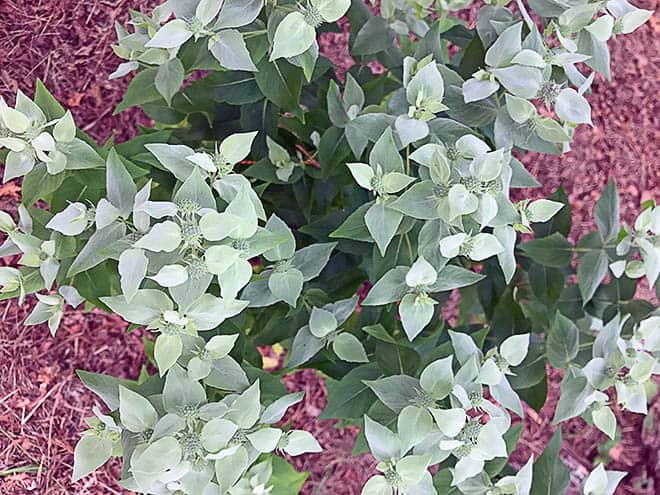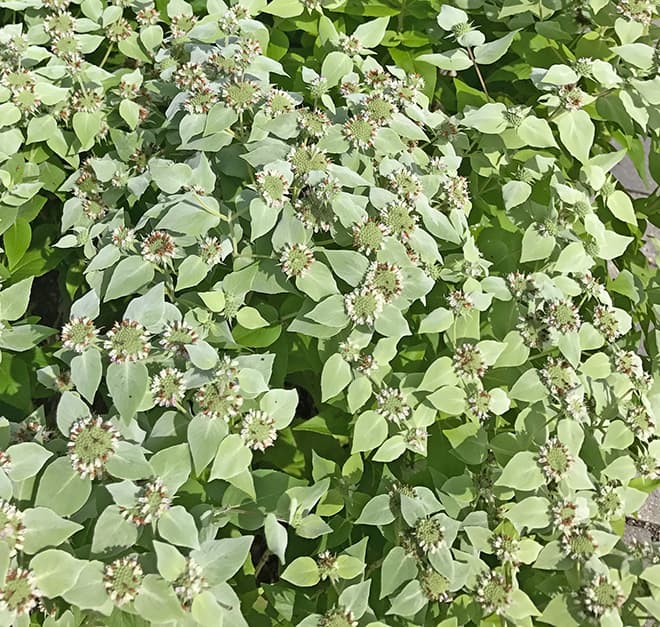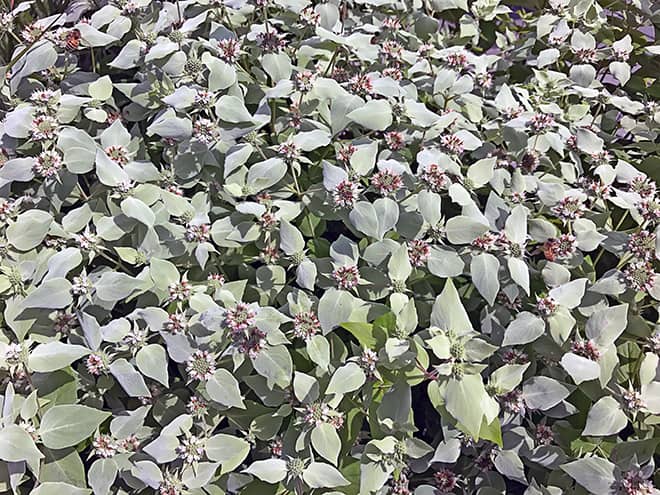Imagine: Emma gazed out over the field in front of their new house. “Honey, wouldn’t it be great to plant a butterfly meadow out there?” she asked. Rob turned to look at what was now a huge expanse of lawn. “If it means that we don’t have to mow it, I’m all for it,” he responded.
“Hmmm…” Emma said. “But it should be something soft looking. Not a riot of colors…grasses and greens and lavenders, maybe.” “Can you pick the colors you want with butterfly plants?” Rob asked. “I thought that most wildflower meadows have plenty of yellow flowers.”
“I’ll look into it,” Emma said, turning away from the window.
Three years later they stood at the same window, looking out at their field in late August. It was soft blur of switch grass, little blue stem, and mountain mint. Here and there purple coneflowers added a touch of lavender-pink and the ground between the plants was filled with low-growing pussy toes.
“It’s all filling out nicely,” Rob said. “Especially the mountain mint.”
“It is pretty amazing,” Emma admitted. “Even better than I’d imagined.

Pycnanthemum incanum, aka hoary mountain mint, has silvery tops.
Name: Pycnanthemum incanum, aka hoary mountain mint
Type of Plant: A perennial (native to the Eastern USA) that grows about two feet tall. A member of the mint family that attracts butterflies and other pollinators.
Why I love this: This mountain mint has soft, whitish green bracts that surround the actual flowers on the top of the flower stems. It’s the perfect plant to use in wild, dry butterfly gardens and it’s a lovely addition to cut-flower bouquets.
A Word to the Wise: While this is a great native for planting in dry areas that are in full sun to part shade, take the “mint” in its common name to heart. It spreads – pretty aggressively in good soils and regular water. So probably not a plant for your perennial garden.
When you buy this in a garden center it’s often growing out of the bottom holes of the pot and when you see this, lock your doors and windows!
That said, hoary mountain mint isn’t as aggressive in dry soils. I’ve got it growing in part shade that seldom gets watered and it hasn’t spread as much as I would like it to…even after our damp spring weather.

Hoary mountain mint grows around two feet tall. It is an aggressive grower so don’t plant it in a small perennial garden. It can be the perfect perennial to fill in a traffic island or slope along the side of a road, however, since it doesn’t grow too tall and is fairly drought tolerant once established.

This mountain mint is growing next to the parking lot at the Chilmark, MA public library.

0 Comments